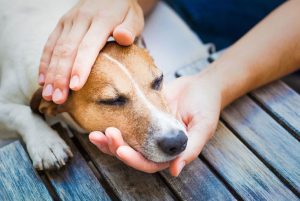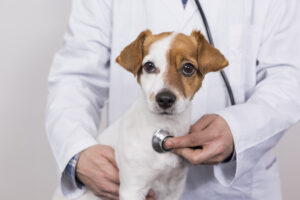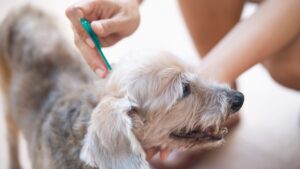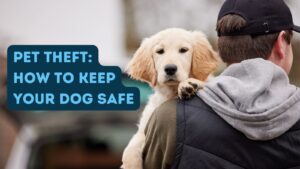Posts Tagged ‘animals’
Understanding and Addressing Common Pet Behavioral Issues
How to Identify Signs of Pain in Pets: A Guide by Olsen Veterinary Clinic
 As pet owners, we deeply care about the well-being of our furry companions. However, unlike humans, pets can’t express their pain in words, making it challenging for us to recognize when something is wrong. Identifying signs of pain in pets is crucial to ensuring they receive prompt medical attention and live a happy, healthy life. At Olsen Veterinary Clinic, we encourage pet owners to be vigilant and aware of subtle signs of pain or discomfort in their pets.
As pet owners, we deeply care about the well-being of our furry companions. However, unlike humans, pets can’t express their pain in words, making it challenging for us to recognize when something is wrong. Identifying signs of pain in pets is crucial to ensuring they receive prompt medical attention and live a happy, healthy life. At Olsen Veterinary Clinic, we encourage pet owners to be vigilant and aware of subtle signs of pain or discomfort in their pets.
Common Signs of Pain in Pets
- Changes in Behavior: One of the first indicators of pain in pets is a noticeable change in their behavior. You may observe that a typically active dog becomes lethargic, or a usually independent cat becomes clingy or irritable. Pets may also become withdrawn, hide more frequently, or avoid interaction with their favorite humans or other animals in the house.
- Vocalization: Though pets can’t talk, they may communicate discomfort through vocalizations. If your pet starts whining, yelping, growling, or meowing more than usual, especially when touched or moved, it may indicate pain. Some pets might also begin purring excessively (in the case of cats), which can be a self-soothing mechanism rather than a sign of contentment.
- Changes in Posture and Movement: Limping, stiffness, difficulty getting up or lying down, or reluctance to jump or climb stairs are telltale signs of physical discomfort. Pets in pain may also adopt unusual postures, such as hunching their back or tucking in their abdomen. If your dog or cat seems to favor a particular side or avoids using a limb, this could indicate an injury or joint pain.
- Decreased Appetite: A decrease in appetite is another common sign that your pet may be experiencing pain. If your pet suddenly becomes uninterested in food or water, it could be due to discomfort, dental pain, or an underlying health issue. Pay attention to any changes in eating or drinking habits and consult your veterinarian if the behavior persists.
- Excessive Grooming or Licking: Pets in pain often focus on the area of discomfort by excessively licking, biting, or grooming. Dogs might chew at their paws or limbs, while cats might over-groom one specific area. In some cases, this behavior can lead to hair loss, skin irritation, or infection.
- Changes in Breathing: Pain can cause changes in your pet’s breathing patterns. Rapid, shallow breathing or panting excessively when not overheated may be an indication of distress. Some pets may also develop an irregular heart rate or appear restless when trying to sleep.
- Unexplained Aggression or Fear: Even the most gentle and loving pets can exhibit aggression when they are in pain. If your pet suddenly starts growling, snapping, or hissing, especially when touched, this could be a defensive response to pain. Additionally, a pet that becomes unusually fearful or anxious in situations where they would typically be comfortable might be signaling they are in distress.
- Digestive Issues: Vomiting, diarrhea, or constipation can be indirect signs of pain, especially if accompanied by other behavioral changes. Gastrointestinal discomfort may also lead to restlessness or a reluctance to lie down, as certain positions may aggravate the pain.
When to Seek Veterinary Attention
If you notice any of these signs, it’s essential to contact a veterinarian as soon as possible. Pain is often a symptom of an underlying condition that requires medical attention. Whether it’s due to injury, arthritis, dental disease, or an internal issue, early diagnosis and treatment can prevent further complications and improve your pet’s quality of life.
At Olsen Veterinary Clinic, we understand how important it is to keep your pets healthy and comfortable. Our team is committed to providing compassionate care and expert guidance to help you navigate any health concerns your pet may experience. If you suspect your pet is in pain, don’t hesitate to bring them in for an examination. Together, we can ensure your furry family member stays happy, healthy, and pain-free.
Being attuned to your pet’s behavior and recognizing the signs of pain early on can make a significant difference in their well-being. By taking a proactive approach and seeking veterinary care when necessary, you can help your pet enjoy a longer, healthier life. If you have concerns about your pet’s health or believe they may be experiencing pain, Olsen Veterinary Clinic is here to assist you every step of the way.
Tips for Traveling with Pets: A Guide from Olsen Veterinary Clinic
 Traveling with pets can be a rewarding experience, but it requires careful planning and preparation to ensure a safe and comfortable journey for both you and your furry companion. Whether you’re taking a road trip, flying, or using public transportation, here are some essential tips to make your travel smooth and enjoyable.
Traveling with pets can be a rewarding experience, but it requires careful planning and preparation to ensure a safe and comfortable journey for both you and your furry companion. Whether you’re taking a road trip, flying, or using public transportation, here are some essential tips to make your travel smooth and enjoyable.
Preparation Before the Trip
- Visit the Veterinarian:
- Schedule a check-up to ensure your pet is healthy and up-to-date on vaccinations.
- Obtain a health certificate if required by your destination.
- Discuss any travel concerns and ask for recommendations on calming aids if your pet is prone to anxiety.
- Microchip and Identification:
- Make sure your pet is microchipped and the information is current.
- Attach an ID tag with your contact information to your pet’s collar.
- Pet-Friendly Accommodations:
- Research and book pet-friendly hotels or lodgings in advance.
- Confirm pet policies, including any restrictions or additional fees.
- Pack Essentials:
- Bring enough food and water for the duration of the trip, plus extra in case of delays.
- Include bowls, a leash, a waste disposal bag, grooming supplies, a first-aid kit, and any medications your pet needs.
- Pack a favorite toy or blanket to provide comfort and a sense of familiarity.
Safety Measures During Travel
- Secure Your Pet:
- Use a pet carrier, travel crate, or a pet seatbelt to keep your pet safe in the car.
- Ensure the carrier is well-ventilated and spacious enough for your pet to stand, turn around, and lie down comfortably.
- Never Leave Pets Unattended:
- Never leave your pet alone in a parked car, as temperatures can quickly become dangerous.
- If you need to stop, take your pet with you or ensure someone stays with them.
- Regular Breaks:
- Plan for regular breaks (every 2-3 hours) to allow your pet to stretch, relieve themselves, and hydrate.
- Use a leash and harness during stops to prevent your pet from running off in unfamiliar surroundings.
Stress-Reducing Strategies
- Comfortable Environment:
- Keep the carrier or crate cozy with your pet’s favorite blanket or bedding.
- Maintain a calm and quiet environment by minimizing loud noises and sudden movements.
- Familiarization:
- Gradually acclimate your pet to their carrier and the car before the trip.
- Take short practice trips to help your pet get used to the sensation of traveling.
- Calming Aids:
- Consider using natural calming aids like pheromone sprays or anxiety wraps.
- Consult with your veterinarian about the use of calming medications if your pet has severe travel anxiety.
- Stay Calm:
- Your pet can sense your emotions, so remain calm and relaxed to help reduce their stress.
- Speak to your pet in a soothing tone and provide reassurance throughout the journey.
Tips for Specific Modes of Travel
- Car Travel:
- Keep windows closed to prevent your pet from sticking their head out, which can be dangerous.
- Use sunshades to block direct sunlight and keep the car cool.
- Air Travel:
- Choose a pet-friendly airline and review their pet travel policies.
- Book a direct flight to minimize stress and reduce the risk of layovers or missed connections.
- Label your pet’s carrier with your contact information and a “Live Animal” sticker.
- Public Transportation:
- Check the specific regulations of the transportation service regarding pets.
- Ensure your pet is comfortable in their carrier and follow any rules regarding pet containment.
By following these tips from Olsen Veterinary Clinic, you can help ensure a safe, comfortable, and stress-free travel experience for you and your pet. Remember, preparation and patience are key to a successful journey with your furry friend. If you ever have any questions about your pet, contact us today. Happy travels!
Dr. Olsen’s Pet Spotlight: The Leonberger Dog Breed
 At Olsen Veterinary Clinic, we celebrate all breeds, and today, we’re delighted to spotlight the Leonberger—a breed renowned for its gentle temperament, impressive size, and striking appearance. Whether you are a seasoned dog owner or considering adding a Leonberger to your family, understanding this breed’s unique characteristics is essential.
At Olsen Veterinary Clinic, we celebrate all breeds, and today, we’re delighted to spotlight the Leonberger—a breed renowned for its gentle temperament, impressive size, and striking appearance. Whether you are a seasoned dog owner or considering adding a Leonberger to your family, understanding this breed’s unique characteristics is essential.
Origin and History
The Leonberger hails from Leonberg, Germany, where Heinrich Essig, a dog breeder, sought to create a breed that embodied the grandeur and loyalty of a lion. By crossbreeding Saint Bernards, Newfoundlands, and Great Pyrenees, Essig succeeded in developing the Leonberger, which soon became a favorite among European royalty. The breed was officially recognized in the late 19th century and has since garnered a loyal following worldwide.
Physical Characteristics
Leonbergers are a sight to behold. Males typically weigh between 110 to 170 pounds, while females range from 90 to 140 pounds. They stand 26 to 32 inches tall at the shoulder, exuding an aura of strength and nobility. Their dense, water-resistant double coat comes in shades of lion-yellow, golden to red-brown, often with a black mask. Regular grooming is essential to maintain their majestic coat and reduce shedding.
Temperament and Behavior
Despite their imposing size, Leonbergers are known for their gentle and friendly nature. They are affectionate, loyal, and thrive on human companionship, making them excellent family pets. Their intelligence and eagerness to please make them highly trainable, although early socialization and obedience training are crucial. Leonbergers are known for their calm demeanor, but they also possess a playful side and enjoy various activities, from hiking to swimming.
Health and Lifespan
Leonbergers are generally healthy, with a lifespan of 8 to 10 years. However, like all breeds, they are prone to specific health issues, including hip dysplasia, elbow dysplasia, and certain types of cancer. Regular veterinary check-ups, a balanced diet, and appropriate exercise are vital to ensuring their well-being. At Olsen Veterinary Clinic, we emphasize preventative care and offer tailored health plans to keep your Leonberger in optimal condition.
Exercise and Activity
Given their size, Leonbergers require regular exercise to maintain their physical and mental health. Daily walks, play sessions, and opportunities to run in a secure area are beneficial. They excel in activities like agility, obedience, and even water rescue, thanks to their strong swimming abilities. Engaging your Leonberger in diverse activities will keep them happy and prevent boredom-related behaviors.
Grooming Needs
Leonbergers have a thick, double coat that requires consistent grooming. Weekly brushing helps prevent mats and tangles, and more frequent grooming may be necessary during shedding seasons. Bathing should be done as needed, and regular checks of their ears, teeth, and nails are essential parts of their grooming routine. At Olsen Veterinary Clinic, we offer comprehensive grooming services to help keep your Leonberger looking and feeling their best.
Leonbergers and Families
Leonbergers are known for their exceptional compatibility with families. They are patient and gentle with children, often forming strong bonds with them. Their protective yet non-aggressive nature makes them excellent watchdogs without being overly territorial. However, due to their size, supervision around small children is recommended to prevent accidental knock-overs.
The Leonberger is a remarkable breed that combines beauty, strength, and a loving temperament. They make wonderful companions for those who can accommodate their size and grooming needs. At Olsen Veterinary Clinic, we are passionate about providing the best care for your Leonberger, ensuring they lead a healthy, happy life. Whether you’re a current Leonberger owner or considering bringing one into your home, our team is here to support you with expert advice and services.
For more information or to schedule a consultation, please contact Olsen Veterinary Clinic. We look forward to helping you and your Leonberger thrive together.
Understanding Pet Vaccinations: Ensuring Your Pet’s Health
 As pet owners, we all want our furry companions to live long, healthy, and happy lives. One of the most crucial aspects of maintaining your pet’s health is ensuring they receive the appropriate vaccinations. At Olsen Veterinary Clinic, we believe in educating pet owners about the importance of vaccinations, the recommended vaccination schedule, and how these preventive measures contribute to your pet’s overall well-being.
As pet owners, we all want our furry companions to live long, healthy, and happy lives. One of the most crucial aspects of maintaining your pet’s health is ensuring they receive the appropriate vaccinations. At Olsen Veterinary Clinic, we believe in educating pet owners about the importance of vaccinations, the recommended vaccination schedule, and how these preventive measures contribute to your pet’s overall well-being.
Why Are Pet Vaccinations Important?
Vaccinations are vital for protecting pets from various infectious diseases, some of which can be life-threatening. These vaccines work by stimulating the immune system to recognize and fight specific pathogens, such as viruses and bacteria, if your pet is exposed to them in the future. Here are some key reasons why vaccinations are essential:
1. Disease Prevention
Vaccines help prevent numerous diseases that can affect pets. For example, canine parvovirus, distemper, and rabies in dogs, and feline leukemia virus and panleukopenia in cats, are all preventable through vaccination.
2. Public Health
Some diseases that affect pets, like rabies, can be transmitted to humans. By vaccinating your pet, you are also protecting yourself, your family, and your community from potential zoonotic diseases.
3. Legal Requirements
In many areas, certain vaccinations, such as rabies, are required by law. Ensuring your pet is up-to-date with their vaccines helps you stay compliant with local regulations.
4. Cost-Effective Health Care
Preventing diseases through vaccination is often far less expensive than treating the diseases once they occur. Regular vaccinations can save you from costly treatments and emergency vet visits.
Recommended Vaccination Schedule
At Olsen Veterinary Clinic, we follow a vaccination schedule that aligns with the guidelines set by veterinary health authorities. Here is a general outline of the recommended vaccination schedule for dogs and cats:
For Puppies and Dogs:
- 6-8 weeks:
- Distemper
- Parvovirus
- Adenovirus (Hepatitis)
- Parainfluenza
- 10-12 weeks:
- Booster for Distemper, Parvovirus, Adenovirus, and Parainfluenza
- Bordetella (Kennel Cough)
- 14-16 weeks:
- Booster for Distemper, Parvovirus, Adenovirus, and Parainfluenza
- Rabies
- 1 year and annually thereafter:
- Annual boosters for Distemper, Parvovirus, Adenovirus, Parainfluenza, and Rabies
- Optional: Lyme disease, Leptospirosis, and Influenza based on your dog’s risk factors
For Kittens and Cats:
- 6-8 weeks:
- Feline Viral Rhinotracheitis (FVR)
- Calicivirus (FCV)
- Panleukopenia (FPV)
- 10-12 weeks:
- Booster for FVR, FCV, and FPV
- Feline Leukemia Virus (FeLV)
- 14-16 weeks:
- Booster for FVR, FCV, FPV, and FeLV
- Rabies
- 1 year and annually thereafter:
- Annual boosters for FVR, FCV, FPV, FeLV, and Rabies
How Vaccinations Contribute to Your Pet’s Well-Being
Regular vaccinations play a crucial role in maintaining your pet’s overall health and well-being. Here’s how:
1. Boosts Immunity
Vaccines strengthen your pet’s immune system, making them more capable of fighting off infections and reducing the severity of illnesses if they do occur.
2. Reduces Disease Spread
By vaccinating your pets, you are helping to control the spread of contagious diseases within the pet population. This is particularly important in communal settings like parks, boarding facilities, and grooming salons.
3. Improves Quality of Life
Healthy pets are happy pets. Vaccinations protect against debilitating diseases that can significantly reduce your pet’s quality of life, ensuring they stay active and vibrant.
4. Longevity
Preventive care, including regular vaccinations, has been proven to extend the lifespan of pets. By safeguarding them against diseases, you are giving your pet the best chance at a long, healthy life.
At Olsen Veterinary Clinic, we are committed to providing the highest standard of care for your pets. Vaccinations are a cornerstone of preventive health care, and we encourage all pet owners to adhere to the recommended vaccination schedules. By doing so, you are not only protecting your pet but also contributing to the overall health of the animal community.
If you have any questions about your pet’s vaccination needs or would like to schedule an appointment, please contact us at Olsen Veterinary Clinic. Together, we can ensure your pet’s health and happiness for years to come.
The Importance of Regular Veterinary Check-ups
 Regular veterinary check-ups are crucial for maintaining the overall health and well-being of your pets. These routine visits play a key role in preventative care and early detection of health issues. Here are some reasons why regular veterinary check-ups are important.
Regular veterinary check-ups are crucial for maintaining the overall health and well-being of your pets. These routine visits play a key role in preventative care and early detection of health issues. Here are some reasons why regular veterinary check-ups are important.
Preventative Care:
Regular check-ups allow veterinarians to administer vaccinations, parasite control, and dental care. Preventative measure can help protect your pet from various illnesses, ensuring they lead a healthier longer life.
Early Detection of Health Issues:
Pets, like humans, can develop health issues that may not be immediately apparent. Regular check-ups enable veterinarians to detect potential health problems early, often before symptoms become severe. Early detection can significantly improve the prognosis and treatment outcomes.
Disease Screening:
Veterinary check-ups may include screenings and tests for common pet diseases. These screenings can help identify conditions such as diabetes, kidney disease, and certain types of cancer in their early stages, allowing for timely intervention.
Dental Health:
Dental issues are common in pets, and they can lead to various health problems if left untreated. Regular veterinary visits often include dental examinations and cleanings, promoting good oral health and preventing dental diseases.
Nutritional Guidance:
Veterinarians can provide guidance on proper nutrition based on your pet’s age, breed, and health condition. A well-balanced diet is essential for maintaining your pet’s overall health and preventing nutrition-related issues.
Behavioral Assessment:
Veterinarians can assess your pet’s behavior during routine visits. Changes in behavior may be indicative of underlying health issues and addressing them early can prevent further complications.
Weight Management:
Maintaining a healthy weight is crucial for your pet’s well-being. Regular check-ups allow veterinarians to monitor your pet’s weight and provide guidance on nutrition and exercise to prevent obesity-related health issues.
Senior Pet Care:
As pets age, their healthcare needs may change. Regular check-ups become even more critical for senior pets to monitor and address age-related conditions, such as arthritis, dental problems, and organ dysfunction.
Client Education:
Veterinary visits are an opportunity for pet owners to learn about their pet’s specific needs, behaviors, and potential health risks. Education from veterinarians empowers pet owners to provide the best care possible.
In summary, regular veterinary check-ups are essential for preventative care, early detection of health issues, and ensuring that your pets lead healthy and happy lives. Establishing a consistent schedule of veterinary visits can contribute significantly to the overall well-being of your beloved companions. Contact our office today to schedule yours or if you have any questions.
12 Tips for Safe Pet Costumes This Halloween
 Dressing up your pet in a Halloween costume can be a fun and adorable way to celebrate the holiday, but it is important to prioritze their safety and comfort. Here are some tips for ensuring your pet’s Halloween costume is safe:
Dressing up your pet in a Halloween costume can be a fun and adorable way to celebrate the holiday, but it is important to prioritze their safety and comfort. Here are some tips for ensuring your pet’s Halloween costume is safe:
- Choose a comfortable costume: Make sure the costume fits your pet properly and doesn’t restrict their movement or breathing. Avoid costumes with tight elastic bands or constrictive straps that could cause discomfort.
- Consider your pet’s personality: Some pets may be more tolerant of wearing costumes than others. If your pet seems stressed or uncomfortable in a costume, it’s best to skip it and find other ways to include them in the festivities.
- Opt for pet-friendly materials: Look for costumes made from soft breathable materials that won’t irritate your pet’s skin or cause allergies. Avoid costumes with small parts that your pet could chew on or swallow.
- Ensure good visibility: Make sure your pet can see clearly while wearing the costume. Avoid costumes that cover their eyes or obstruct their vision, as this can be dangerous.
- Check for choking hazards: Remove any small or dangling parts that your pet could chew on or swallow. Those could pose a choking hazard.
- Avoid costumes with hoods or masks: Hoods or masks can restrict your pet’s breathing and make it difficult for them to see or hear. Opt for costumes that leave their face uncovered.
- Practice wearing the costume: If your pet is not used to wearing clothes, practice with the costume in advance to Halloween. This can help them get accustomed to it and reduce stress.
- Monitor your pet: Keep a close eye on your pet while they are wearing the costume especially if they are wearing it for the first time. Watch for signs of discomfort.
- Don’t force it: If your pet clearly doesn’t want to wear the costume or seems distressed, respect their feelings and remove it immediatlely. It’s not worth causing stress or discomfort to your furry friend.
- Plan comfort breaks: If your pet will be wearing the costume for an extended period, make sure they have regular breaks to stretch, eat, drink and use the bathroom.
- Be mindful of the environment: Keep your pet’s safety in mind when you take them out in public wearing a costume. Avoid busy streets or crowded areas where your pet might get scared or owerwhelmed.
- Capture the moment: Once your pet is comfortably dressed up, take some adorable photos to cherish the memory. Share them with friends and family to spread the Halloween spirit! Remember that not all pets will enjoy wearing costumes, so always prioritize their well-being and comfort. If your pet appears distressed or unhappy in a costume, it’s best to remove it and find other ways to include them in your Halloween festivities.
We at Olsen Veterinary Clinic are always here if you have any questions about your pet, so feel free to contact us at any time. We wish you and your pet a safe and Happy Halloween!
Should Your Dog Get a Choker Collar? Here’s What You Need to Know
 Whether or not your dog should wear a chain choker collar is a matter of debate among dog trainers, veterinarians, and animal welfare organizations. There are several factors to consider before deciding to use a chain choker collar:
Whether or not your dog should wear a chain choker collar is a matter of debate among dog trainers, veterinarians, and animal welfare organizations. There are several factors to consider before deciding to use a chain choker collar:
1 Training Methodology: Chain choker collars are often used in training as a correction tool. However, they are associated with aversive training methods that rely on punishing undesirable behaviors through discomfort or pain. Many modern dog trainers advocate for positive reinforcement-based training methods, which focus on rewarding desired behaviors rather than punishing unwanted ones.
2 Breed and Size of the Dog: Smaller or more delicate dog breeds may be more vulnerable to injury when using chain choker collars. Breeds with thin necks, like Greyhounds, may be at a higher risk.
3 Health and Behavior Issues: Some dogs may have underlying health issues or behavioral problems that make the use of chain choker collars risky or inappropriate. For example, dogs with respiratory problems, brachycephalic breeds (i.e., Bulldogs), or fearful and aggressive should not be subjected to such collars.
4 Training Experience: If you are not experienced in using chain choker collars correctly, there is a risk of causing harm to your dog or reinforcing negative behaviors unintentionally. It is crucial to learn how to use these collars properly if you choose to use them.
5 Alternatives: There are many alternative training tools and methods available that can effectively train dogs without resorting to aversive methods. Positive reinforcement, clicker training, and head halters are examples of more humane and effective training tools.
6 Consultation with a Professional: If you are considering using a chain choker collar, it is strongly recommended that you consult with a professional dog trainer or behavioralist who can assess your dog’s specific needs and help you make an informed decision.
7 Local Laws and Regulations: Some places have laws and regulations that restrict or even ban the use of certain dog collars, including chain choker collars. Be sure to check your local laws and follow them accordingly.
If you have any questions about this or anything else, don’t hesitate to contact our office.
How to Choose the Right Flea and Tick Medicine for Your Dog
 With the weather being nice, people and pets are tired about being cooped up inside. They are starting to enjoy the fresh air, the calm breezes in their face and the warmth of the sun. But whether it is a walk in the park, a weekend camping along the lake or even lounging around your front yard, fleas and ticks could be waiting to latch onto your pet and hitch a ride. So because of this, application of a flea and tick control or collar is essential to prevent them from infesting your home.
With the weather being nice, people and pets are tired about being cooped up inside. They are starting to enjoy the fresh air, the calm breezes in their face and the warmth of the sun. But whether it is a walk in the park, a weekend camping along the lake or even lounging around your front yard, fleas and ticks could be waiting to latch onto your pet and hitch a ride. So because of this, application of a flea and tick control or collar is essential to prevent them from infesting your home.
There are many factors to consider when choosing the optimal product. One must decide if they want a collar, topical or chewable tablet. Each one has their pro’s and con’s about them. The collars and topical products such as Frontline or Advantage have been around a lot longer and may be less expensive to buy, but we have seen breaks in protection because the fleas and ticks have gained resistance or the product has not been used properly. Some of those products are approved by the EPA so they might not be safe to use on your pet. Recently new products such as Nexguard or Bravecto have been developed that are taken orally. Because they are newer products, the fleas and ticks have not developed a resistance to them. Also since they are ingested, they are approved by the FDA to assure their safety to the pet.
There are several oral products available like Simperica Trio that will also control other parasites, along with fleas and ticks. So they may be more expensive but be more convenient in the long run.
The best thing to do is to have a conversation with your vet about what is best for your pet, as well as what works for you financially. We are happy to have a conversation about any concerns you have. Prevention is key, so make sure to protect your furry companion this summer. Contact our offices today!
National Pet Theft Awareness Day
 Our pets are very important to us and we rely on them for comfort and support every day. So it is devastating and hard to believe that a pet would be stolen. Every year about 2 million pets go missing with only about 10 percent returned home. These figures have alarmingly risen about 37 percent since 2007. So in honor of National Pet Theft Awareness Day which is being celebrated on February 14, I am going to blog about why they are stolen and how to reduce the possibility of your pet being dog- or cat- napped.
Our pets are very important to us and we rely on them for comfort and support every day. So it is devastating and hard to believe that a pet would be stolen. Every year about 2 million pets go missing with only about 10 percent returned home. These figures have alarmingly risen about 37 percent since 2007. So in honor of National Pet Theft Awareness Day which is being celebrated on February 14, I am going to blog about why they are stolen and how to reduce the possibility of your pet being dog- or cat- napped.
There are quite a few reasons why someone may steal a pet. According to PetFBI, these are the most common:
- Pet Flipping: Popular breeds of dogs can be “resold” online or in the paper.
- Reward: Some pets are stolen in hopes the owner will offer a reward, which the thief will then claim
- Puppy Mills: Pets that have not been spayed or nuetered may be turned over to backyard breeders or puppy mills
- Dog Fighting Rings: Small dogs and cats have been stolen to be used as “bait” for dog-fight training. The large breed dogs are often used as dog fighting candidates.
- Neighbors: If pets have been known as “nuisances” neighbors have been known to take animals and dump them in other locales.
- Relatives: Sadly, many pet thefts come from family members who are upset with you like in a divorce or family dispute
- Good Intentions: Not all pet-nappings are maliscious. A good-hearted person may believe that they are helping your pet if they feel that the pet is being neglected in some way. This is why you never leave your pet tied up in your yard, keeping them outside only, or have a pet that has signs of being neglected.
There are steps that owners can take to prevent their pets from being stolen. First and foremost, HAVE YOUR PET MICROCHIPPED and make sure that their records are updated. Remember that the microchip is only as good as the registration, so make sure that they are microchipped. In addition, you can:
- Your pets should not be allowed to run free outdoors unattended and make sure that your pets are always wearing a collar and identification.
- Spay and neuter your pets
- Don’t tie up your dog outside of a restaurant or store and never leave your pet in a car.
- Keep dog doors and fence gates locked when you are not at home.
- Have updated photos of your pet with emphasis on special markings
- Install cameras. Indoor and outdoor camera networks are ideal for keeping your pet safe.
Nothing is scarier or upsetting to come home and find your pet missing. It is of most importance to act quickly as every minute matters when you are looking for your pet, whether they have escaped from your yard or have been dog-napped.
If you believe that they have been stolen, immediately report it to the police. This provides a record that is documented and can be used for further action. It is important to canvas the area on foot every day. Creating a “Lost Pet” poster and placing throughtout the community helps others watch for your pet in cars, on the street or at neighbors. Post a lost pet report through your microchip company and your animal control. Avoid posting a reward is being offered.
If you have any other questions about microchipping or keeping your pet safe, do not hesitate to contact our office today.

 At Olsen Veterinary Clinic, we understand that pets, much like humans, can exhibit a range of behavioral issues. These behaviors can stem from anxiety, fear, lack of proper training, or even medical conditions. While some behavioral quirks are simply part of a pet’s unique personality, others can cause stress for both the pet and their owner. Fortunately, most of these behaviors can be managed or corrected with proper guidance and training.
At Olsen Veterinary Clinic, we understand that pets, much like humans, can exhibit a range of behavioral issues. These behaviors can stem from anxiety, fear, lack of proper training, or even medical conditions. While some behavioral quirks are simply part of a pet’s unique personality, others can cause stress for both the pet and their owner. Fortunately, most of these behaviors can be managed or corrected with proper guidance and training.